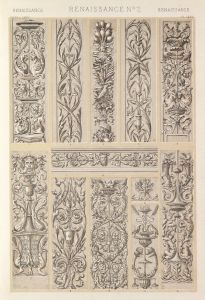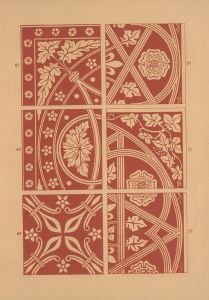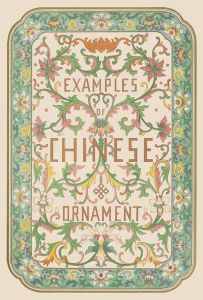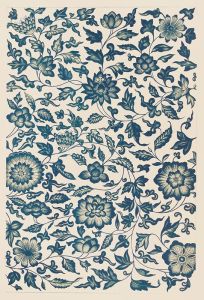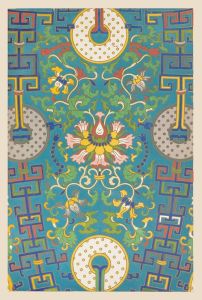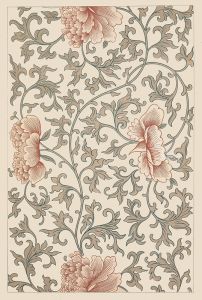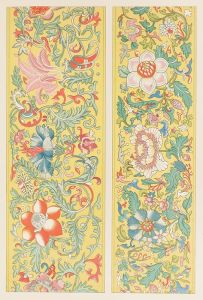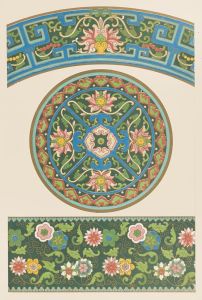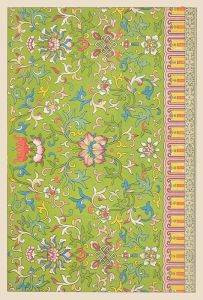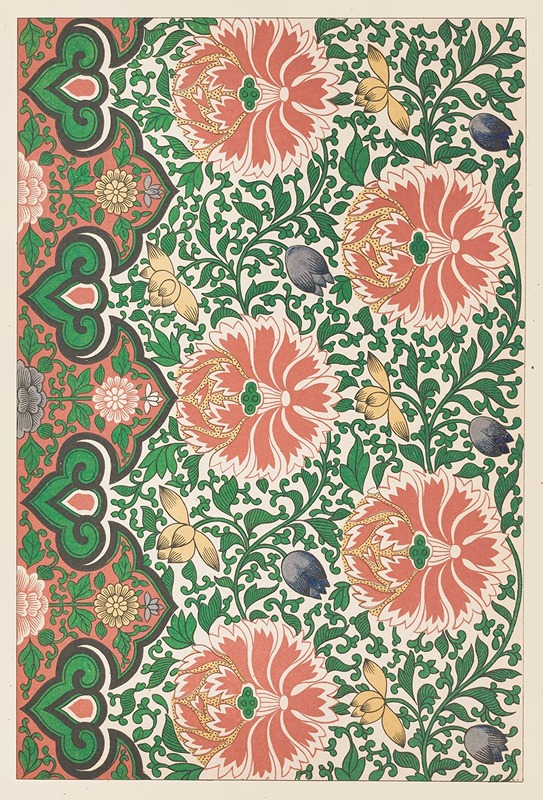
Examples of Chinese ornament, Pl.61
A hand-painted replica of Owen Jones’s masterpiece Examples of Chinese ornament, Pl.61, meticulously crafted by professional artists to capture the true essence of the original. Each piece is created with museum-quality canvas and rare mineral pigments, carefully painted by experienced artists with delicate brushstrokes and rich, layered colors to perfectly recreate the texture of the original artwork. Unlike machine-printed reproductions, this hand-painted version brings the painting to life, infused with the artist’s emotions and skill in every stroke. Whether for personal collection or home decoration, it instantly elevates the artistic atmosphere of any space.
"Examples of Chinese Ornament, Pl.61" is a plate from the influential design book "The Grammar of Ornament" by Owen Jones, first published in 1856. Owen Jones was a British architect and designer known for his work in color theory, ornamentation, and his contributions to the design principles of the 19th century. "The Grammar of Ornament" is a comprehensive collection of design patterns and motifs from various cultures around the world, serving as a reference for designers and architects.
Plate 61 specifically focuses on Chinese ornamentation, showcasing the intricate and symbolic designs that are characteristic of Chinese art. The plate is part of a broader effort by Jones to document and celebrate the diversity of global design traditions. His work was pioneering in its time, as it sought to elevate the status of decorative arts and provide a systematic study of design principles across different cultures.
Chinese ornamentation, as depicted in Plate 61, often includes motifs such as dragons, phoenixes, clouds, and floral patterns, each carrying its own symbolic meaning. Dragons, for example, are traditionally associated with power, strength, and good fortune in Chinese culture. Floral patterns might include peonies, symbolizing wealth and honor, or lotus flowers, representing purity and enlightenment. The use of vibrant colors and symmetrical patterns is also a hallmark of Chinese design, reflecting a deep appreciation for harmony and balance.
Jones's depiction of Chinese ornamentation was part of a larger Victorian fascination with the "exotic" and the arts of Asia. During the 19th century, there was a growing interest in Eastern art and culture in Europe, partly due to increased trade and contact between the continents. This interest was reflected in the arts and crafts movement, which sought to incorporate non-Western design elements into Western art and architecture.
"The Grammar of Ornament" was not only a design manual but also an educational tool. It aimed to inspire designers by providing them with a rich source of visual ideas and to encourage the appreciation of different cultural aesthetics. Jones's work emphasized the importance of understanding and respecting the cultural origins of design motifs, advocating for a more informed and sensitive approach to the use of ornamentation.
The book's impact was significant, influencing generations of designers and architects. It also contributed to the development of design education, as it was used as a textbook in art and design schools. "The Grammar of Ornament" remains a valuable resource for those interested in historical design and the cross-cultural exchange of artistic ideas.
In summary, "Examples of Chinese Ornament, Pl.61" by Owen Jones is a testament to the rich tradition of Chinese decorative arts and its influence on Western design. Through his meticulous documentation and analysis, Jones helped bridge cultural divides and foster a greater appreciation for the beauty and complexity of global ornamentation.






